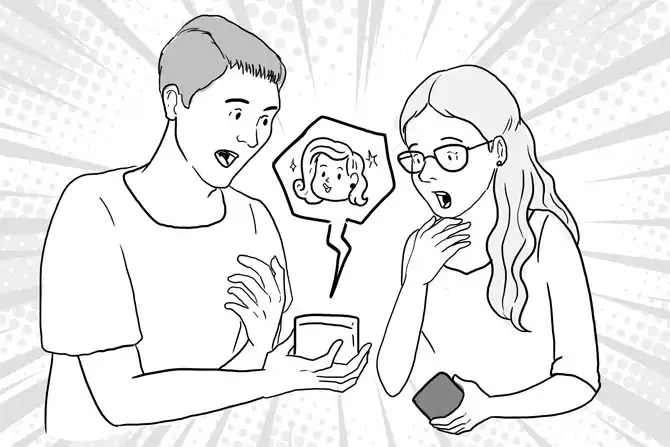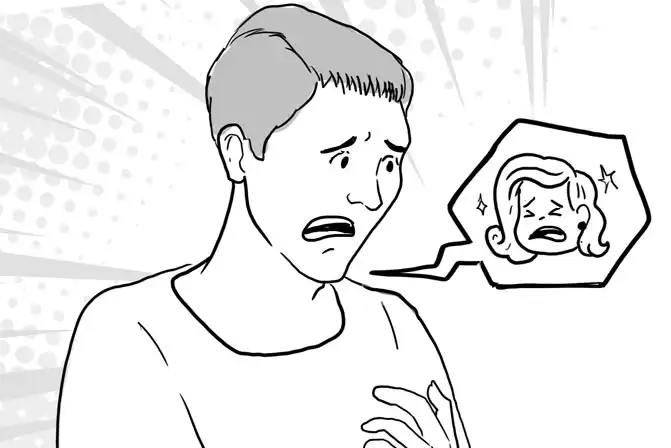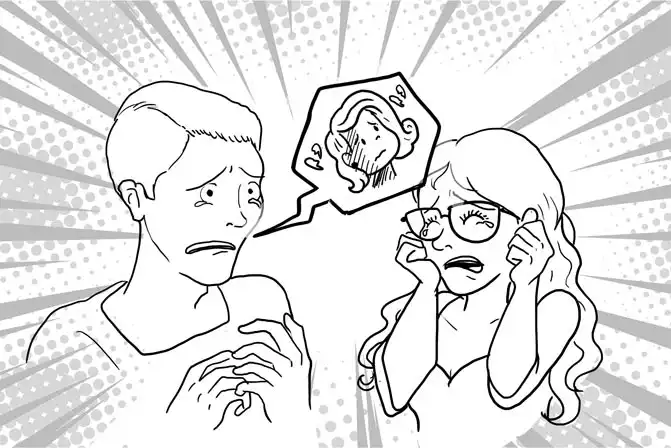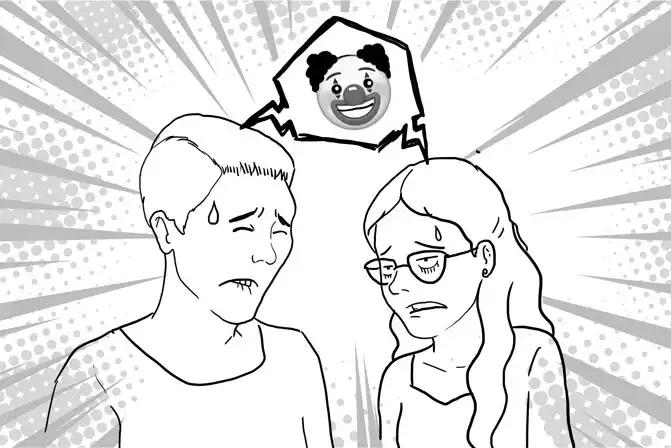Read and listen to the conversation between Lucy and Jarvis and pay attention to the phrases in bold. When you finish reading and listening, answer the questions below about the conversation.

boy: Hey, Lucy. Did you know that Bree aka Lonelygirl15 was not a real person?
girl: What? No, Jarvis. I thought she was an actual teenager, like us.

boy: Well, it was a fake account. I didn’t believe my eyes when I read the newspaper about it.
girl: But, I could identify with her. First, her photos were so real…

boy: I know! Also, she posted info about how stressed she was at school. We know that happens!
girl: Yeah! Finally, after we found out that her family disappeared, a lot of people wanted to help, including me…

boy: Everyone! I almost cried when I knew she was alone.
girl: Pfff! That was devastating for all her followers.

boy: I think next time I watch a video on Youtube, or any post on the internet I’ll first investigate to figure out if it’s true or not.
girl: Me too!
1. Observe the sentence below, What’s the tense of the verbs in bold?
| Present simple | Simple Past | |
|
I didn’t believe my eyes when I read the newspaper about it. |
|
|
2. Observe the sentence below, What’s the tense of the verbs in bold?
| Present simple | Simple Past | |
|
I almost cried when I knew she was alone. |
|
|
3. Well done if you answered correctly, this is the last question: What’s the intention when we use two actions in the past in the same sentence?
| To show how two complete actions happened simultaneously in the past. | To show that one action interrupts another in the past. |
|
|
|
If you answer the third question correctly, you are familiarized with the past simple, its structure and use. But anyway, let’s have a quick review.
Unscramble the elements, to form the correct structure of a positive and negative sentence, as well as a question in the simple past.
POSITIVE SENTENCES:
|
disappeared |
of the earthquake |
a girl |
the night |
|---|---|---|---|
|
VERB IN PAST |
COMPLEMENT |
SUBJECT |
COMPLEMENT |
NEGATIVE SENTENCES:
|
what to do |
Jose |
didn’t |
know |
|---|---|---|---|
|
COMPLEMENT |
SUBJECT |
AUXILIARY |
VERB IN SIMPLE FORM |
YES/NO QUESTIONS IN PAST SIMPLE:
|
to carry the woman |
Did |
accept |
on his back? |
Jose |
|---|---|---|---|---|
|
COMPLEMENT |
AUXILIARY |
VERB IN SIMPLE FORM |
COMPLEMENT |
SUBJECT |
WH-QUESTIONS IN PAST SIMPLE:
| Alva Edison | What | design? | did |
|---|---|---|---|
|
SUBJECT |
WH WORD |
VERB IN SIMPLE FORM |
AUXILIARY |
So, the simple past is used to refer to events that started and finished in the past. These events can be 1. short and quickly finished, 2. longer situations, or 3. repeated events. Sometimes they are two completed events or two events that happened simultaneously.
For instance:
I didn’t believe my eyes when I read the newspaper about it.
I almost cried when I knew she was alone.
Now, in the conversation between Lucy and Jarvis, there are some expressions in bold that are useful when describing events. Observe:
First, her photos were so real…
Also, she posted info about how stressed she was at school.
Finally, after we found out that her family disappeared, a lot of people wanted to help, including me…
Those words help to give sequence and add information to the story being told. In case you need to express the same ideas in a more formal way, use the following:
Instead of First, use To begin with followed by a sentence to introduce the first of several points in a conversation or a text. Use the expression at the beginning of a sentence and add a comma after it. E.g.:
To begin with, her photos were so real.
Instead of Also, use In addition between two sentences or in addition to followed by a noun, pronoun or a verb in -ing at the beginning, in the middle, or at the end of a sentence. These expressions are used to mention another element related to the discussion or the topic developed. If the expressions in addition or in addition to start a sentence, use a comma. E.g:
Lonelygirl15 was a hoax. In addition, there wasn’t anybody called Bree behind the account.
Teenagers could identify with lonelygirl15 because she was the same age in addition to her(noun) problem with stress.
In addition to that, she(pronoun) posted info about how stressed she was at school.
In addition to believing(verb in -ing) that lonelygirl15 was a real person, people tried to help her.
Instead Finally, use To sum up in more formal contexts to summarize the main points or characteristics of something. It is often used at the beginning of a sentence, followed by a comma. E.g.:
To sum up, after we found out that her family disappeared, a lot of people wanted to help, including me…
Read the two columns and match the ideas.


